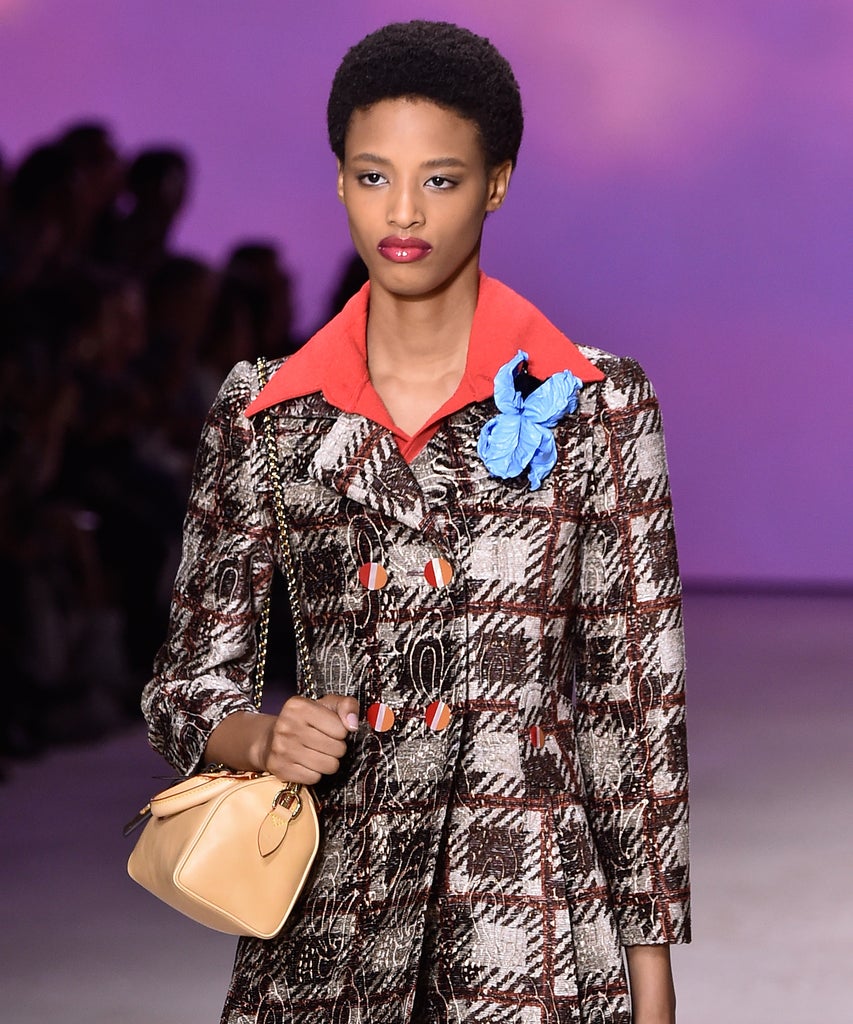
PARIS, FRANCE – OCTOBER 01: Janaye Furman walks the runway during the Louis Vuitton Womenswear Spring/Summer 2020 show as part of Paris Fashion Week on October 01, 2019 in Paris, France. (Photo by Peter White/Getty Images)
In an effort to appear diverse and inclusive, Elle Germany declared that “Black is back,” referring to what the magazine deemed to be a resurgence of Black models, specifically shouting out Joan Smalls (a Puerto Rican supermodel who was ranked the number one model in the world in 2012) among newcomers like Anok Yai (21), Adut Akech (19), Mayowa Nicholas (21), Aliet Sarah (18), and Janaye Furman (24). The fashion industry’s watchdog Diet Prada posted images of the cover on Tuesday, featuring headlines (that roughly translate to) “Dream Catcher: Open the door to your inner translations,” “Extra Jewelry: 34 pages full of glamour,” “Magical! The new formula for healthy skin,” “Schwartz is back: irresistible, “and finally, “Back to Black.” But despite Elle‘s proclamation that black people are “back” in style — as if we are the latest trend — there is a white model on the cover. And to add insult to injury, inside the magazine, Naomi Chin Wing was misidentified as Janaye Furman. Furman uploaded a video of her sipping a cup of tea on Instagram as a response.
A post shared by Diet Prada ™ (@diet_prada) on Oct 29, 2019 at 8:10am PDT
On the same page where Elle Germany misidentified Furman, the text reads “Beautiful, successful, committed: Models of Color were never in demand as they are now. But these great women also inspire us off the catwalks.” Let’s pause here for a second. The cover said the magazine was celebrating Black models but the text inside of the issue says “models of color.” Which is it? Looping Black people into the umbrella term people of color ignores all of the anti-Blackness we experience at the hands of other people of color. It’s clear the white staff at Elle Germany does not have the range to write about race when they ignore the nuances in language used to describe race and ethnicity.
The cover line “Back To Black” presents blackness as a trend as vapid and transient as prairie dresses. Reducing someone’s race, ethnicity and culture to a mere trend is ignorant and it upholds white supremacy. What’s more, saying models of color were never in demand like they are now is untrue. We’ve always been in demand — our culture being mined and appropriated is surely proof of that — but as Diet Prada noted in its callout, we’ve been denied both access and visibility in the fashion industry. “Ironic when they, along with much of the fashion industry, have been complicit in denying visibility to Black models until relatively recently,” read their caption.
A post shared by ELLE Germany (@ellegermany) on Oct 30, 2019 at 2:29am PDT
On Wednesday, Elle Germany responded to the quick and warranted backlash. “In our current issue we are approaching the color [B]lack from different angles,” the statement begin. “As one of the topics, it was our aim to feature strong [B]lack women who work as models for the fashion industry,” Sabine Nedelchev, editor-in-chief, wrote. “In doing so, we have made several mistakes for which we apologize to anyone we might have hurt. It was a mistake to use the cover line ‘Back to Black’ which could be understood as if [B]lack persons would be a kind of fashion trend. This obviously wasn’t our intention and it was our mistake not to be more sensitive about this.”
A post shared by Janaye (@iam_janaye) on Oct 29, 2019 at 1:44pm PDT
This debacle is an example of what happens when you do not actually believe that Black people deserve a seat at the table but want to cash in on our cultural cache and coolness. You want our buying power but you don’t want to do the work to show that you are truly engaged, respectfully, without pandering. Magazine staffs like Elle Germany refuse to acknowledge that the world is bigger than their bubble of privilege — and that ignorance, in part, is why legacy publications and traditional media spaces are now struggling to maintain relevancy.
Click HERE to read more.
You can publish this article on your website as long as you provide a link back to this page.

Be the first to comment